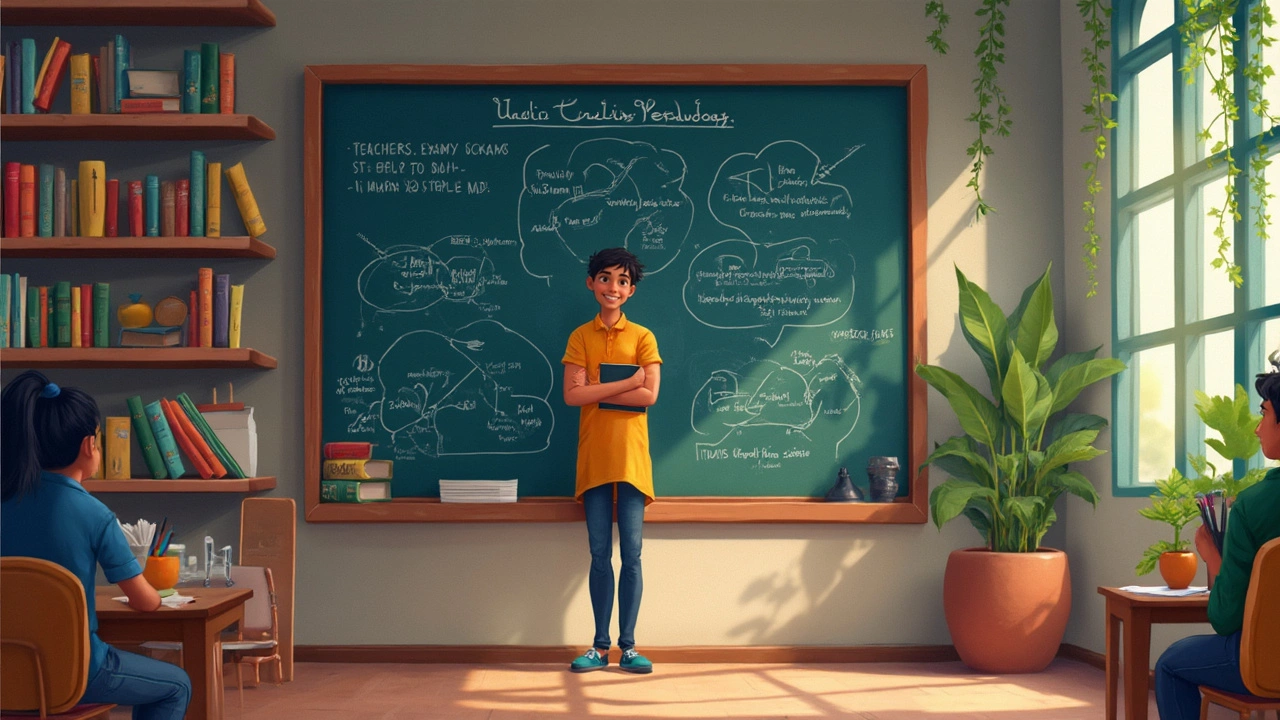So, what's initial teacher training all about, anyway? Basically, it's the process of getting folks ready to stand in front of a classroom and not just survive, but thrive! We're talking about learning the ropes, understanding those pesky theories, and most importantly, getting some real-life practice. You know, like riding a bike. You don't just read a manual; you hop on and start pedaling.
Now, you might be wondering why this training matters so much. Well, imagine trying to build something without solid blueprints. Initial training gives future teachers the groundwork they need. It's where they figure out how to handle those 'teachable moments' and even the occasional classroom chaos. Hey, no one said teaching was a walk in the park!
- What is Initial Teacher Training?
- Importance of Hands-On Experience
- Challenges and Solutions
- Tips for Aspiring Teachers
What is Initial Teacher Training?
Initial Teacher Training (ITT) is the gateway to becoming a qualified teacher. It's like the boot camp for educators, where you get a mix of theory and real-world practice. The whole idea is to prep you for everything from lesson planning to handling a classroom full of energetic kids.
In many countries, this involves getting a bachelor's degree in education or a postgraduate certificate if you already have a degree in another field. You learn how to develop teaching strategies, understand educational psychology, and dive into curriculum design. Basically, you're learning how to be the best teacher you can be.
The structured programs typically last one to two years and include a fair amount of time spent doing teaching placements in schools. This is maybe the most crucial part—getting hands-on experience in actual classrooms. It’s where you test out your skills and learn how to adapt when things don't go according to plan. And trust me, there will be days when things don’t go as planned!
Here's a little glimpse of what this training might cover:
- Understanding different learning styles and how to cater to them.
- Developing classroom management strategies to keep things running smoothly.
- Assessment techniques to evaluate student performance effectively.
- Staying updated with educational technology and how to incorporate it into lessons.
ITT is also about getting the gist of professional standards and ethics. After all, teaching is not just about knowledge but also about nurturing young minds responsibly.
Did you know? In some parts, there's a real push towards school-based training routes, where you spend most of your time in classrooms, learning on the job. It’s basically like an apprenticeship. It’s gaining popularity because you get to experience teaching challenges head-on.
Importance of Hands-On Experience
When it comes to initial training, nothing beats rolling up your sleeves and diving into the real classroom hustle. Think about it: no matter how many books you read or seminars you attend, you don't truly get it until you're in front of a lively bunch of students.
Hands-on experience is where theory meets practice. It's that game-changer moment when aspiring teachers put all those strategies and techniques into action. During this phase of teacher training, they get to test what works and, well, what doesn't. It's like experimenting with a recipe—you learn by doing, adjusting as needed.
Many training programs make this even more effective by pairing trainees with experienced mentors. It's like having a backstage pass where you get to see how seasoned teachers handle the daily juggling act. Trainees not only observe but also get feedback, helping them tweak their approach and grow.
Consider this compelling fact: according to a study in Canada, teachers who had extensive practical experience during their training are over 60% more likely to remain in the profession for over five years compared to those who didn’t. This kind of data isn’t just trivia; it’s a testament to how essential real-world experience is.
The hands-on part of training builds confidence, too. You're no longer just learning in abstract terms; you're managing a classroom, engaging kids, and figuring out your unique teaching style—all before officially entering the workforce. So if you're gearing up for a teaching career, embrace every chance to practice. It's the stuff that turns a good teacher into a great one.

Challenges and Solutions
Jumping straight into the world of teacher training can feel a bit like diving into deep waters. There's a bunch of challenges that might pop up along the way, but don't worry, there are some solid solutions to keep you afloat.
First off, understanding the initial training theories can be overwhelming. Trying to juggle different teaching methods and theories gets tricky fast. It helps to focus on one concept at a time. Don't be afraid to ask questions or seek resources online. Those teacher training forums are gold!
Another common hurdle is the shift from theory to practice. Classroom chaos is as real as it gets, with every day bringing something new. But here's a tip: treat every mistake as a learning opportunity. Reflecting on what happened during the day can turn mishaps into lessons.
Dealing with a diverse classroom is a biggie. Not all students learn the same way, making differentiation crucial. The key here is to employ a variety of instructional strategies. Whether it's group work, visual aids, or hands-on activities, mixing things up can do wonders.
- Build relationships with mentors and peers. They know the ropes and can offer guidance and support.
- Continuously seek feedback. Constructive criticism can be a game changer.
- Don’t forget to take care of yourself. Balance is key, so find time to relax and recharge.
Here’s a little stat to keep you motivated: Teachers who adopt a variety of teaching methods report a 30% higher engagement rate among students. So, embrace the challenges with a positive attitude and remember, every teacher was once in your shoes!
Tips for Aspiring Teachers
Thinking about stepping into the world of teaching? Well, you're in for quite the adventure. To help you along the way, here are some practical tips that can really help you during your initial training and beyond.
First off, embrace the power of observation. Before you get your own class, watch experienced teachers in action. You’ll pick up on classroom management skills, lesson pacing, and even some nifty hacks. Keep a journal of what stands out. Trust me, it'll come back to help you when you're on the spot.
Next up, don't shy away from feedback. Constructive criticism is like gold dust in the teacher training world. Ask mentors and peers for advice and actually listen to what they say. Your mentor isn’t there to nitpick every little detail; they genuinely want you to succeed.
Build a support network. Fellow trainees, faculty, or friends who are already teaching can be great allies. You’ll find comfort in knowing you’re not alone and trade stories that might just save the day in your own teaching practice.
Let’s talk lesson planning. Mastering this skill will make a huge difference. Start by setting clear objectives for each lesson and keep them simple. You’ll eventually finesse this skill, but starting basic is a good move.
Be ready to adapt. Every class is different, and sometimes what you planned just won’t work. Keep alternative activities in your back pocket and don’t panic if things go off script—it’s all part of the experience.
Lastly, remember to focus on self-care. Teaching is a noble but taxing profession. Make time for yourself and set boundaries. Your well-being directly affects your teaching quality, so don’t neglect it.
And if you're into numbers, a quick stat: Over 80% of new teachers who maintain a strong network and prioritize self-care continue in their roles beyond the first five years, compared to those who don't.
Stay curious, keep learning, and most importantly, enjoy the journey. You're about to become an important part of shaping the future, and that's something truly special.


